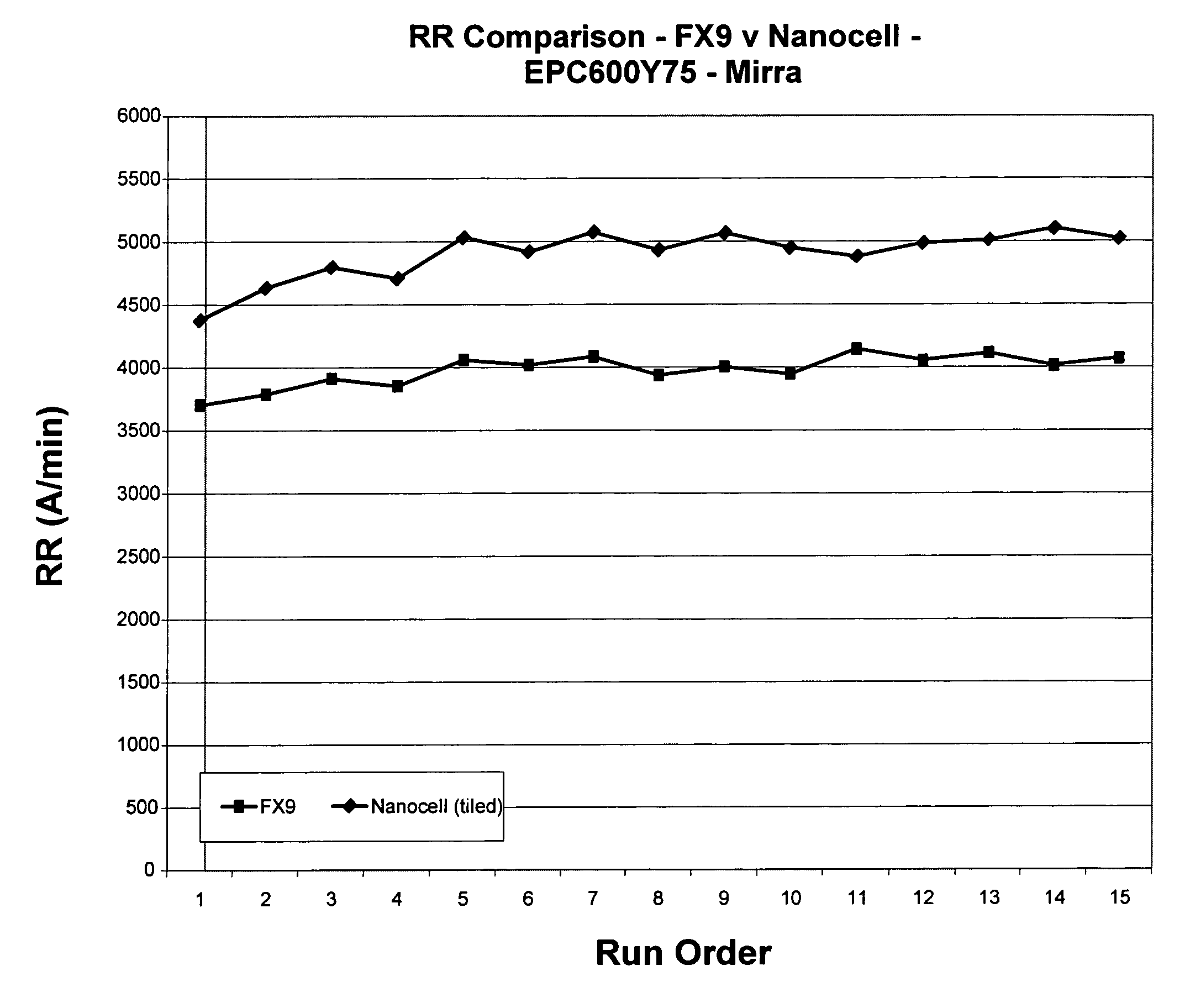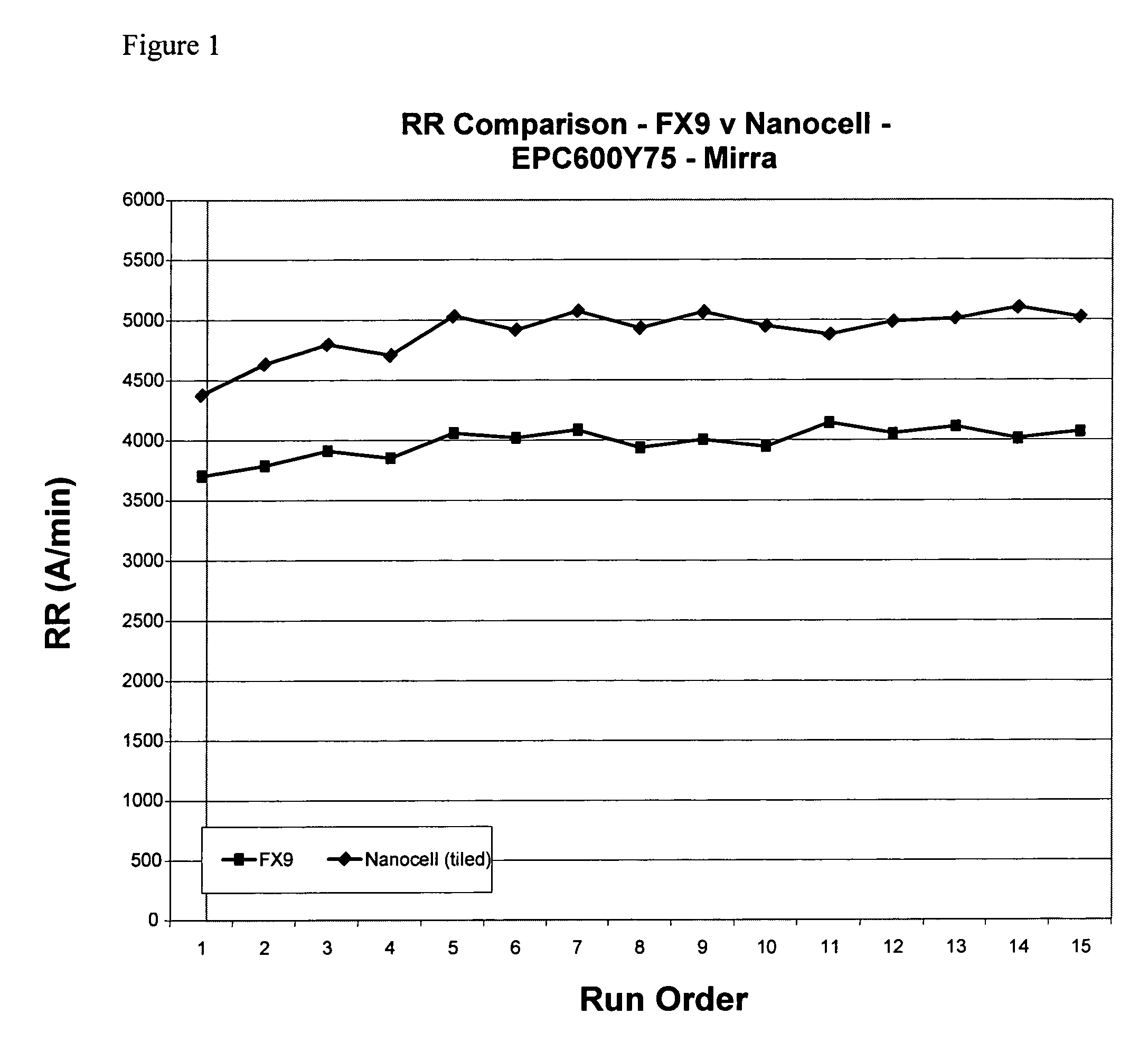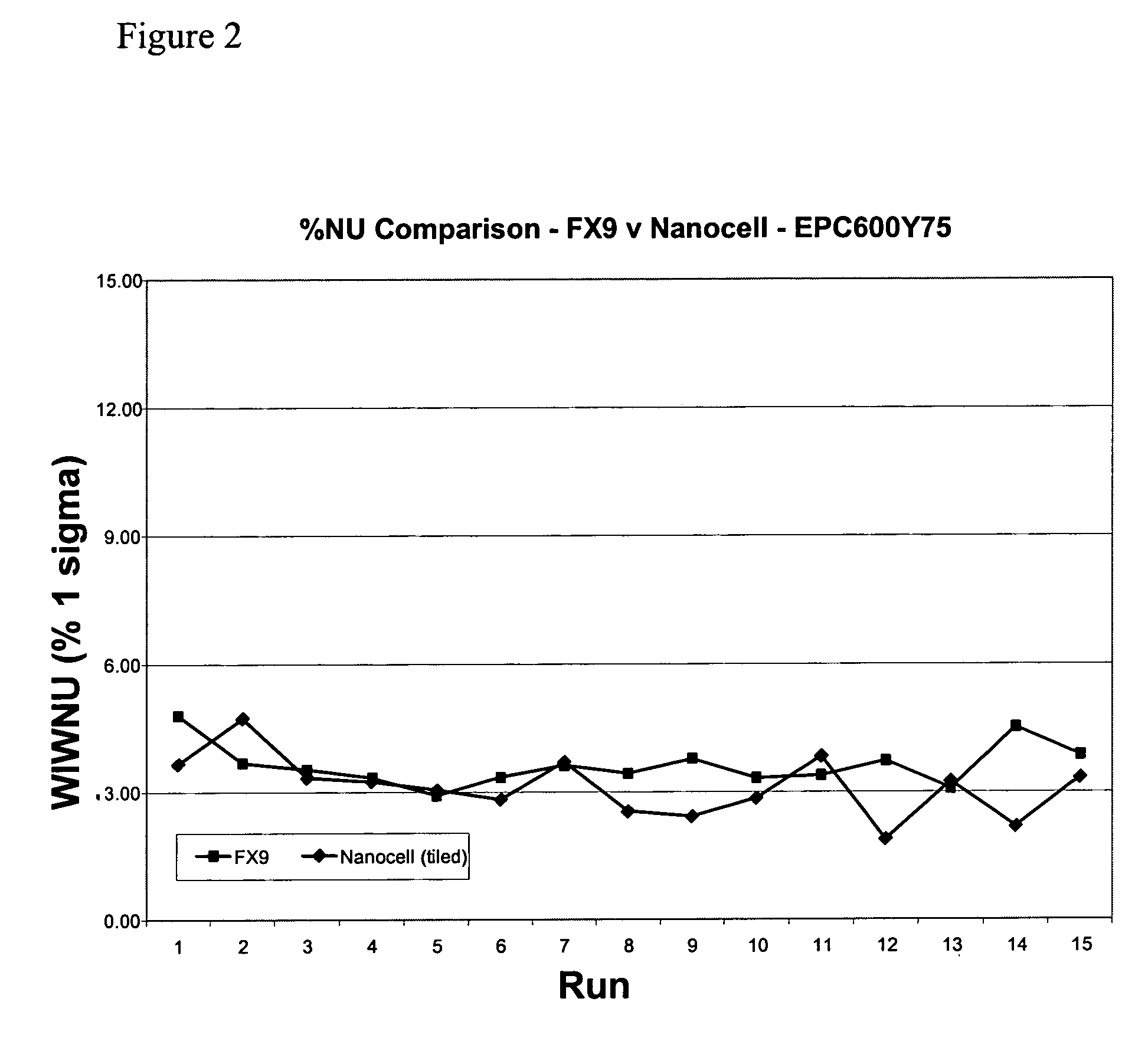Transparent microporous materials for CMP
a microporous material and cmp technology, applied in the direction of flexible wheel, grinding machine components, manufacturing tools, etc., can solve the problems of unsatisfactory polishing performance, undesirable polishing defects, and constant decrease of optical transmittance during the lifetime of the polishing pad
- Summary
- Abstract
- Description
- Claims
- Application Information
AI Technical Summary
Benefits of technology
Problems solved by technology
Method used
Image
Examples
example 1
[0039]Typical properties of pad samples given in Table 1 were produced from extruded TPU sheets with a solid sheet density of 1.2 g / cc with resin hardness of 72 Shore D, sheet thickness of 58 mils, saturation CO2 pressure of 5 MPa, saturation time of 40 hours, CO2 desorption time of 3 minutes and foaming time of 2 minutes. Foaming temperatures of 106° C. and 111° C. were used for sample A and B, respectively. The amount of CO2 used to foam each sheet was 43 mg CO2 / g of polymer for sample A and 53 mg CO2 / g of polymer for sample B.
[0040]
TABLE 1Pad PropertiesShoreρp% R / TgSampleA(g / cc)ρp / ρsCell Size (μm)% C(° C.)A96.50.98883%0.5 μm ± 0.28 μm0.0644B95.50.85071%1.4 μm ± 1.2 μm 0.0846
[0041]A copper polishing comparison test between a commercially available pad (Freudenberg FX-9) with the sample A pad of the present invention was performed using a 20 inch (508 cm) diameter pad with subpad and x-y grooves on a Mirra polisher. As shown in FIGS. 1 and 2, the sample A pad of the present inventi...
PUM
| Property | Measurement | Unit |
|---|---|---|
| pore size | aaaaa | aaaaa |
| average cell size | aaaaa | aaaaa |
| density | aaaaa | aaaaa |
Abstract
Description
Claims
Application Information
 Login to View More
Login to View More - R&D
- Intellectual Property
- Life Sciences
- Materials
- Tech Scout
- Unparalleled Data Quality
- Higher Quality Content
- 60% Fewer Hallucinations
Browse by: Latest US Patents, China's latest patents, Technical Efficacy Thesaurus, Application Domain, Technology Topic, Popular Technical Reports.
© 2025 PatSnap. All rights reserved.Legal|Privacy policy|Modern Slavery Act Transparency Statement|Sitemap|About US| Contact US: help@patsnap.com



